March is Women’s History Month! To celebrate, we’ve compiled a list of 10 women pianists we think more people should know about.
Since the invention of the first pianoforte, remarkable pianists have helped cement the piano’s reputation as “the King of Instruments.” Unfortunately, the achievements of women pianists and composers have often been overshadowed by the works of their male contemporaries.
Thanks to archivists, historians, and music appreciators alike, it’s easier than ever to learn about remarkable pianists, composers, and musicians from all walks of life!
Here are a few of our favorite women pianists and composers that we think more people should know about, presented alphabetically. From classical to jazz, from the 19th century to the present day, you’re sure to find a new favorite pianist from the ones on this list.
This is by no means a comprehensive list. If we missed one of your favorite women pianists, please let us know! Also, we’ve put recordings of these pianists and their compositions in a playlist on YouTube, so be sure to check that out too!
Martha Argerich (b. 1941)
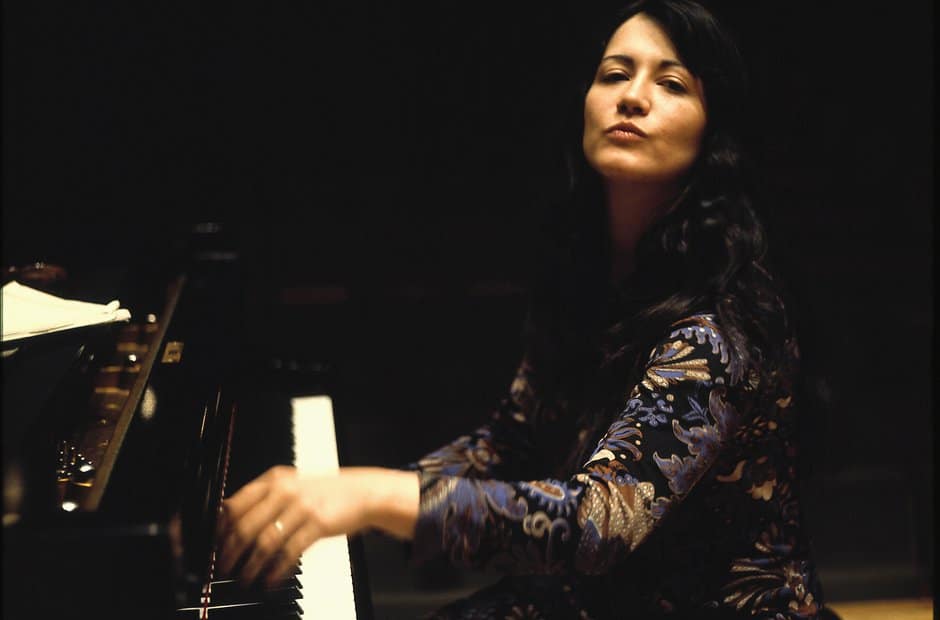
Martha Argerich at the piano
Martha Argerich is an Argentine classical concert pianist. She began playing the piano at the age of three and gave her first public performance when she was just eight years old. Her talent was quickly recognized, and she went on to study with some of the most renowned pianists of her time. In 1965, she won the prestigious Chopin Piano Competition in Warsaw, cementing her reputation as one of the most gifted pianists of her generation.
Martha Argerich is widely regarded as one of the greatest pianists of the 20th century. Her technical expertise and musicality have earned her a loyal following among fans of classical music. Argerich’s interpretations of the works of composers such as Chopin, Beethoven, and Schumann are considered to be some of the finest ever recorded. Despite her success, Argerich has always maintained fiercely independent and refused to conform to the expectations of the classical music establishment. She has been a mentor to many young musicians and is known for her support of new and emerging talent. Argerich’s enduring legacy as a pianist and musician is a testament to her unparalleled talent and dedication to her craft.
We previously featured Martha Argerich on our blog post “5 Latino Pianists You Should Know About”
Teresa Carreño (1853 – 1917)
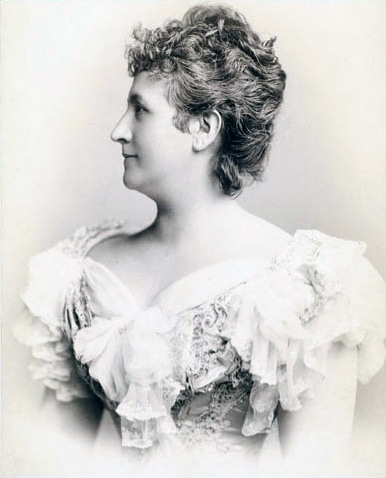
Teresa Carreño in 1916
María Teresa Gertrudis de Jesús Carreño García was a Venezuelan pianist, soprano, composer, and conductor. A child prodigy, she began performing in public at the age of six. By the time she was a teenager, she was recognized as one of the most talented pianists of her generation. Carreño went on to tour extensively throughout the United States and Europe, earning critical acclaim for her performances. In addition to her career as a performer, she was also a composer and conductor.
Teresa Carreño was a trailblazer for women in classical music, breaking down barriers and challenging the gender prejudices of her time. Her talent and artistry helped to establish the role of women in classical music and inspired generations of musicians. Carreño’s legacy as a composer and performer continues today. She is recognized as one of the most influential figures in the history of classical music in Latin America. Her enduring contributions to the world of music serve as an inspiration to aspiring musicians even today.
Clara Haskil (1895 – 1960)
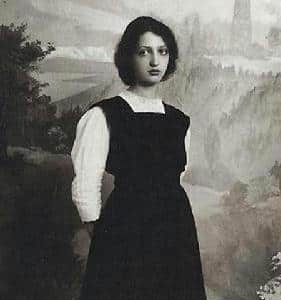
Clara Haskil
Clara Haskil was a Romanian classical pianist, renowned as an interpreter of the classical and early romantic repertoire. She began playing the piano at a young age and quickly demonstrated a remarkable talent for music. Haskil went on to study with some of the most renowned pianists of her time and made her debut as a concert pianist in 1913. Despite her success as a performer, her early career was cut short by the numerous physical ailments she suffered throughout her life, namely scoliosis. She was able to gain most of her success later in life.
Clara Haskil is notable for her extraordinary talent as a pianist and her dedication to her craft. Her performances were characterized by their sensitivity, depth, and technical mastery. Haskil was a sought-after performer, and she toured extensively throughout Europe, the United States, and South America. Despite her impressive talent, she remained modest throughout her life, preferring to let the music speak for itself. Dinu Lipatti described her playing as “the sum of perfection on earth.” Rudolf Serkin, much to her embarrassment, nicknamed her “the perfect Clara.”
Myra Hess (1890 – 1965)
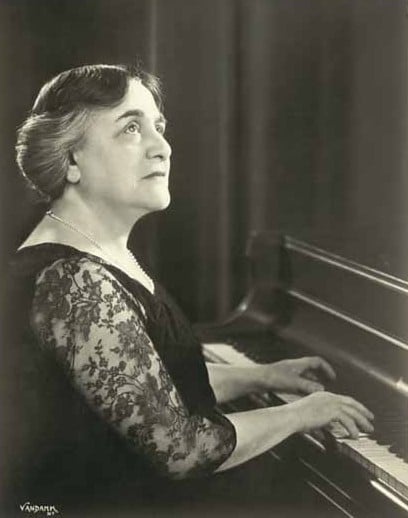
Dame Myra Hess at the piano
Dame Julia Myra Hess, DBE was an English pianist best known for her performances of the works of Bach, Mozart, Beethoven, and Schumann. She began playing the piano at a young age and quickly demonstrated a remarkable talent for music. Hess went on to study with some of the most renowned pianists of her time and made her debut as a concert pianist in 1907. She became one of the most sought-after performers of her generation, known for her technical mastery and interpretive skill.
During World War II, London’s music venues were closed to avoid mass casualties if any were hit by bombs. In 1939, Hess organized a series of lunchtime concerts at the National Gallery in London to boost morale during the war. These concerts, which came to be known as the National Gallery Concerts, became a symbol of hope and resilience in a time of great uncertainty. Hess performed in 150 of these concerts herself, and the series continued until 1946, by which time over 700 concerts had been held. Hess’s commitment to bringing music to the people during a time of crisis has made her a beloved figure in the history of classical music. Her legacy as a pianist and cultural ambassador continues to inspire musicians and music lovers around the world.
Maria João Pires (b. 1944)

Maria João Pires
Maria João Alexandre Barbosa Pires is a Portuguese classical pianist, widely regarded as one of the leading interpreters of Mozart, Beethoven, and Chopin. She began playing the piano at the age of three. Pires went on to study with some of the most renowned pianists of her time, including Rosalyn Tureck and Karl Engel. She made her debut as a concert pianist in 1959 and quickly established herself as a notable performer of her time.
Maria João Pires is notable for her poetic and introspective interpretations of classical music. Her performances are marked by their sensitivity, nuance, and musicality. Pires’ recordings of the works of Chopin and Beethoven are considered to be some of the finest ever made. Pires has been honored with numerous awards throughout her career, including the Order of Prince Henry, Portugal’s highest honor, and the Glenn Gould Prize, one of the most prestigious awards in classical music.
In 1999, Pires was set to perform a Mozart concerto, when a few notes in, she realized she had prepared for the wrong one. As a testament to her professionalism, skill, and incredible memory, she was able to perform the right concerto from memory anyway. Practice really does make perfect!
We previously featured Maria João Pires on our blog post “Our Top 10 Pianists for Inspiration”
Florence Price (1887 – 1953)
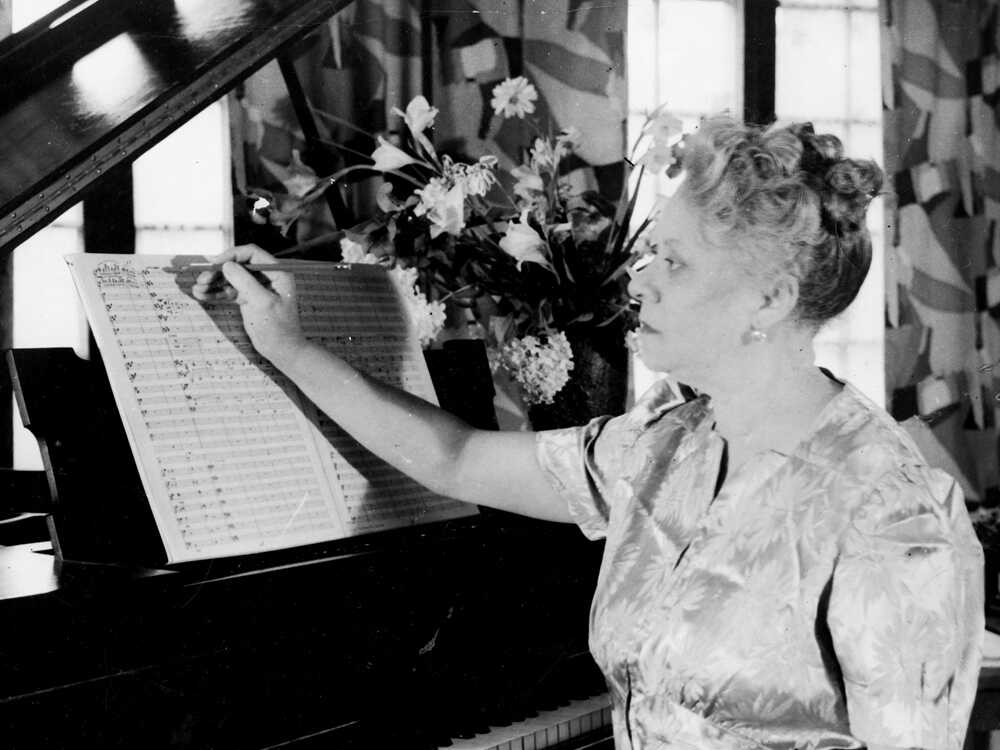
Florence Price was the first African-American woman to have her music performed by a major symphony orchestra.
Florence Beatrice Price (née Smith) was an American classical composer, pianist, organist, and music teacher. A native of Little Rock, Arkansas, she began playing the piano at a young age and later studied at the New England Conservatory of Music. Despite facing racial discrimination throughout her career, Price went on to become one of the most prominent composers of her time. Her works were performed by major orchestras across the United States, including the Chicago Symphony Orchestra and the New York Philharmonic.
Florence Price was a pioneering force. As a Black female composer in the classical music world, she broke down barriers and challenged the racism and sexism of her time, paving the way for future generations of Black musicians and composers. Price’s compositions, which drew on African American spirituals and other elements of Black culture, were ahead of their time and helped to shape the course of American classical music. Her legacy as a composer and innovator continues to be celebrated today, and she is recognized as one of the most important figures in the history of classical music in the United States.
We previously featured Florence Price on our blog post “6 Black Pianists You Should Know About”
Clara Schumann (1819 – 1896)
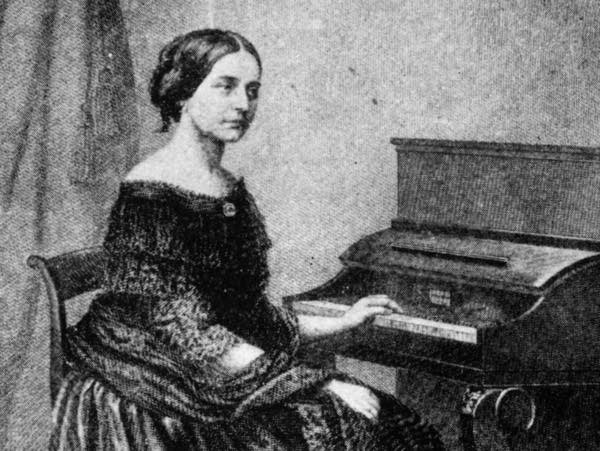
Clara Schumann at the piano
Clara Josephine Schumann (née Wieck) was a German pianist, composer, and piano teacher. She was a child prodigy, and her father, noted piano teacher (and owner of a piano store!) Friedrich Wieck, recognized her musical talent early on. Under her father’s guidance, Clara became one of the most acclaimed pianists of the 19th century. She went on to have a successful career as a performer, composer, and teacher, despite facing many challenges as a woman in a male-dominated field.
Clara Schumann is notable for her contributions to the development of Romantic-era music. Her compositions, which include works for solo piano, chamber music, and songs, are marked by their technical brilliance and emotional depth. She was also a supporter of her husband, Robert Schumann, and played a significant role in preserving his legacy after his death. In addition to her musical accomplishments, Clara was a devoted mother of eight and a champion for women in the arts.
Hazel Scott (1920 – 1981)

Hazel Scott in 1944
Hazel Dorothy Scott was a Trinidad-born American jazz and classical pianist and singer. She was a musical prodigy and began playing the piano at the age of three. Her family moved to New York City when she was four, and by the time she was a teenager, she was performing in clubs and theaters around the city. In 1938, she made her Broadway debut in the musical “Sing Out the News.” She went on to have a successful career in both music and film, appearing in movies such as “Something to Shout About” and “The Heat’s On.”
Hazel Scott’s work as a Black woman in the entertainment industry helped to break down barriers and challenge the racial prejudices of her time. In 1950, she became the first Black woman, and first Black American overall, to have her own television show, “The Hazel Scott Show.” However, her career was derailed by the anti-Communist persecutions of the 1950s, and she was blacklisted in Hollywood. Despite this setback, Scott continued to perform and advocate for civil rights and was a powerful voice for social justice throughout her life. Her legacy as a talented musician and fierce advocate for equality continues to inspire generations of musicians and activists.
We previously featured Hazel Scott on our blog post “6 Black Pianists You Should Know About”
Mitsuko Uchida (b. 1948)
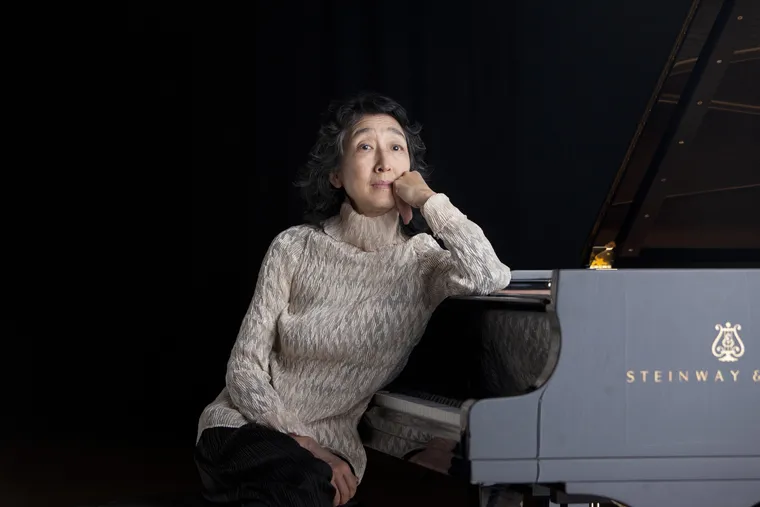
Mitsuko Uchida at the piano
Dame Mitsuko Uchida, DBE is a Japanese-British classical pianist and conductor, born in Japan and naturalized in Britain, particularly noted for her interpretations of Mozart and Schubert. She began studying piano at the age of three, and by the time she was a teenager, she had already won several major international competitions. Uchida moved to Vienna in 1969 to study with Richard Hauser, a renowned piano teacher, and began performing throughout Europe. In the early 1980s, she began performing and recording the complete Mozart piano sonatas, a project that would become one of her most significant contributions to classical music.
Mitsuko Uchida is one of the most acclaimed pianists of her generation, known for her technical precision, musical sensitivity, and deep understanding of the classical repertoire. Her interpretations of the music of Mozart, Schubert, and Beethoven are widely regarded as some of the finest recordings of these works. Uchida’s commitment to the music she plays is matched by her dedication to education and outreach, and she has worked tirelessly to inspire and mentor young musicians. She has been awarded numerous honors for her contributions to classical music, including the Commander of the Order of the British Empire and the Royal Philharmonic Society Gold Medal. Today, Uchida continues to perform around the world, sharing her love of music with audiences everywhere.
Mary Lou Williams (1910 – 1981)
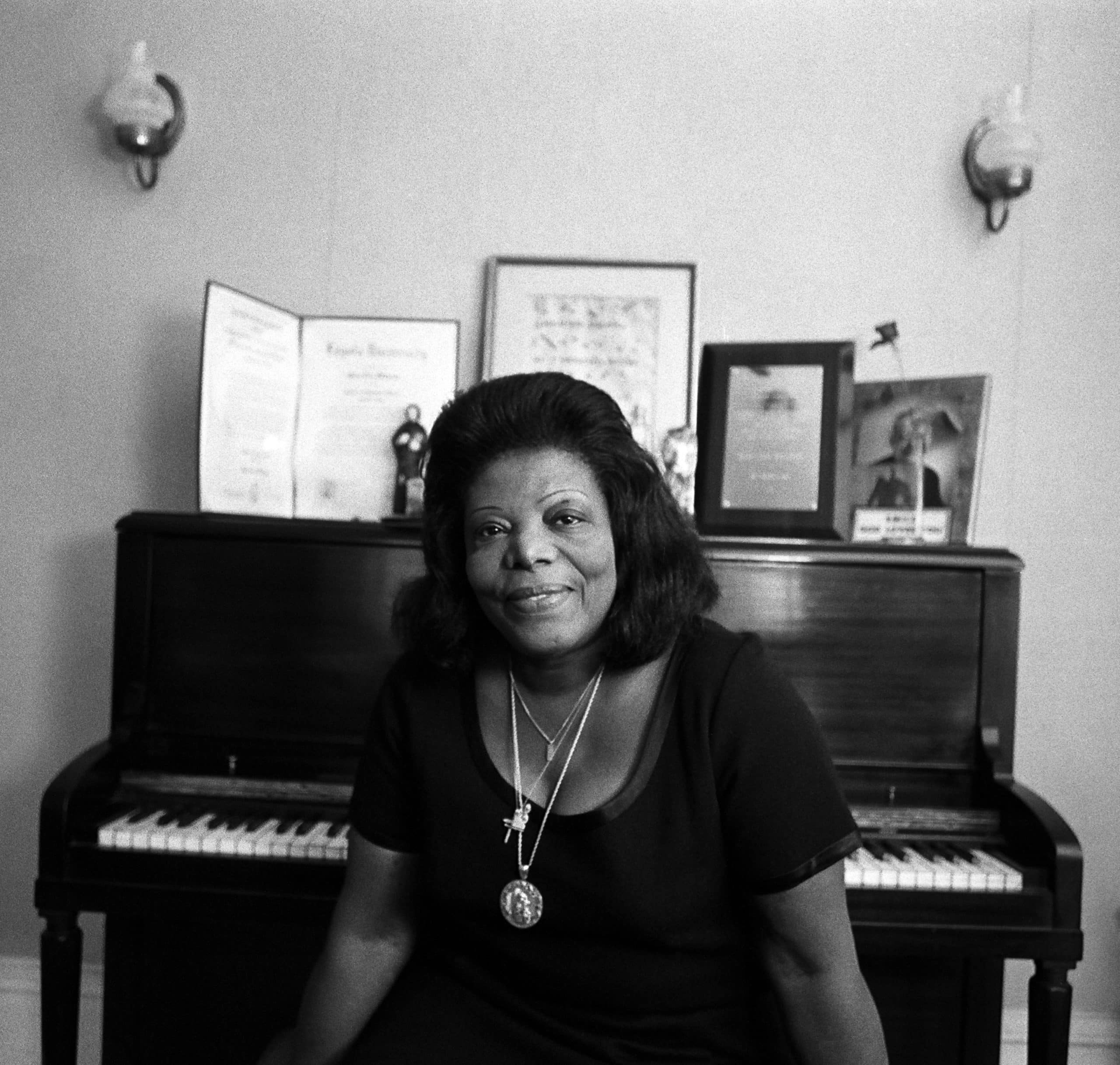
Mary Lou Williams at the piano
Mary Lou Williams (born Mary Elfrieda Scruggs) was an American jazz pianist, composer, and arranger, and one of the few women pianists in the male-dominated world of jazz. Williams began performing publicly at the age of seven when she became known admiringly in Pittsburgh as “The Little Piano Girl.” She became a professional musician at the age of 15 and went on to become one of the most influential jazz musicians of the 20th century.
Mary Lou Williams is notable for her innovative approach to jazz. Her music drew on a wide range of influences, including swing, bebop, and traditional African American music, and she was known for her complex arrangements and improvisational skill. Williams worked with some of the biggest names in jazz, including Duke Ellington, Benny Goodman, and Thelonious Monk, and her compositions have been performed by countless musicians over the years. In addition to her musical contributions, Williams was a mentor to many younger musicians and an advocate for social justice.
Did we miss one of your favorite women pianists? Let us know in the comments! And here’s the link to the complete 10 Women Pianists You Should Know playlist on YouTube so you can save them all and watch them later





0 Comments